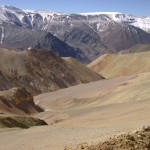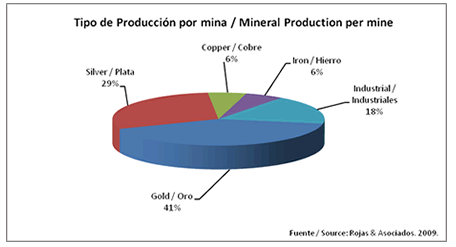 In spite of the global crisis, Argentina continues to crystallize projects and mines of significant importance, further enhancing an already dynamic sector.
In spite of the global crisis, Argentina continues to crystallize projects and mines of significant importance, further enhancing an already dynamic sector.
It is true that the crisis precipitated the exit of a good number of companies with projects in exploration –both grass roots and advanced- but the vast majority owe their withdrawal to other reasons. For example, Alexander Gold had already decided to stop their Leon project months before; they now are only maintaining the property and focusing on the development of their processing technology Metaleach. ATW Venture (now ATW Gold) completed two drilling programs between 2007 and 2008 in the Amarillo project, owned by Marifil Mines, and after not being able to find what they intended they decided to leave the country to focus on their newly acquired gold mine, now already in production. Most of the over 130 companies still active in Argentina have reduced their activities drastically, but with interest in maintaining their assets and weather the storm. It is hardly surprising that in an environment mostly populated by junior companies, the sector has a high mobility in any economic situation.
Even though current market conditions are harder, there are still funds available for exploration. A particular event in the Argentinean mining sector proves this: the biggest IPO of the year reached USD 100 M, by Magma Energy, a company focused on geothermal exploration. The relationship between Magma and Argentina? Magma’s CEO is the mining mogul Ross Beaty, also Chairman of Pan American Silver, operator of the Manantial Espejo silver-gold mine located in Santa Cruz. And Magma also has geothermal interests in Argentina, Chile and other countries with rich geothermal potential.
And on spite of everything, there are still new players. During 2009 at least a dozen firms have laid eyes on Argentina. Some, like Troy Resources, went for the gold, literally, acquiring the Casposo gold deposit in a private bid that left several other bidders on the road. Other junior companies have arrived to do grass roots exploration, such as Metropolitan Mining and Cadillac. Also a few name changes occurred –Apex Silver emerged from chapter 11 in the US as Golden Minerals, and Suramina is now Canadian Gold Hunter- as well as escicions, Pachamama was created from Mansfield Minerals.
 The other side of the story is production: the largest amount of mines in the Argentina’s history, from which 12 are metalliferous: Veladero, Martha, Cerro Vanguardia, San José, Alumbrera, Pirquitas, Gualcamayo, Manantial Espejo, Aguilar, Farallón Negro, Andacollo y Sierra Grande; plus numerous industrial minerals deposits from which Salar del Hombre Muerto, Tincalayu and Loma Blanca stand out; Río Turbio’s coal and rhodocrosite in Capillitas. This implies that Argentina will soon be 3rd gold producer in South America, after Peru (203 Tn) and Brazil (49.7 Tn).
The other side of the story is production: the largest amount of mines in the Argentina’s history, from which 12 are metalliferous: Veladero, Martha, Cerro Vanguardia, San José, Alumbrera, Pirquitas, Gualcamayo, Manantial Espejo, Aguilar, Farallón Negro, Andacollo y Sierra Grande; plus numerous industrial minerals deposits from which Salar del Hombre Muerto, Tincalayu and Loma Blanca stand out; Río Turbio’s coal and rhodocrosite in Capillitas. This implies that Argentina will soon be 3rd gold producer in South America, after Peru (203 Tn) and Brazil (49.7 Tn).
Before the end of 2009, two new mines will commence construction, the binational giant Pascua Lama, with an investment close to USD 3 B and Casposo, with USD 100 M.
All in all, mining in Argentina continue to grow and consolidate. Thousands of mining workers, both technicians and professionals, are joining the workforce each year, and continue to provide this new sector of the economy more critical mass and opportunity.
Interested in knowing more about mining in Argentina? See the latest update >>https://www.argentinamining.com/en/mineria-argentina-2009-despues-de-la-tormenta-cual-es-el-panorama